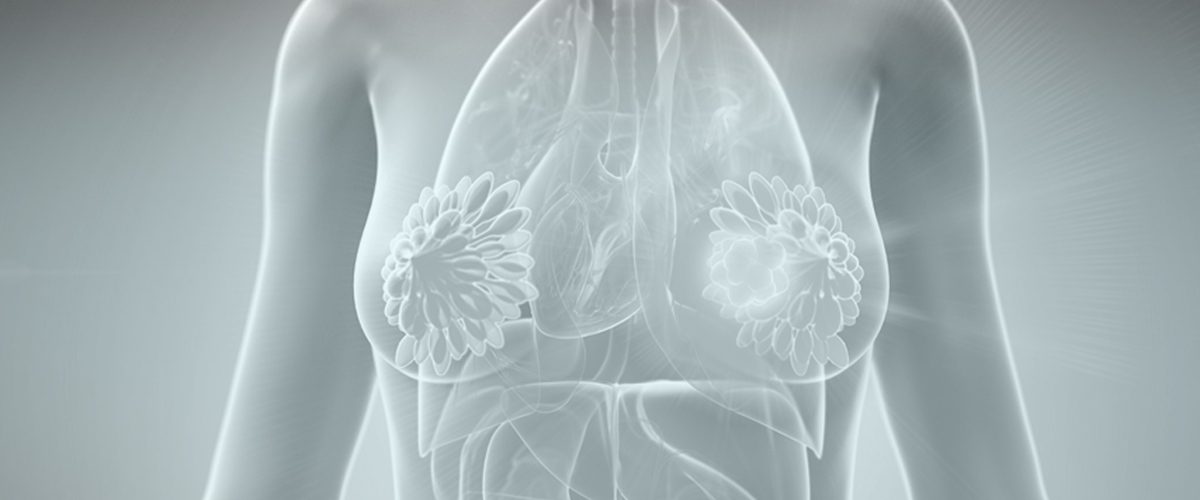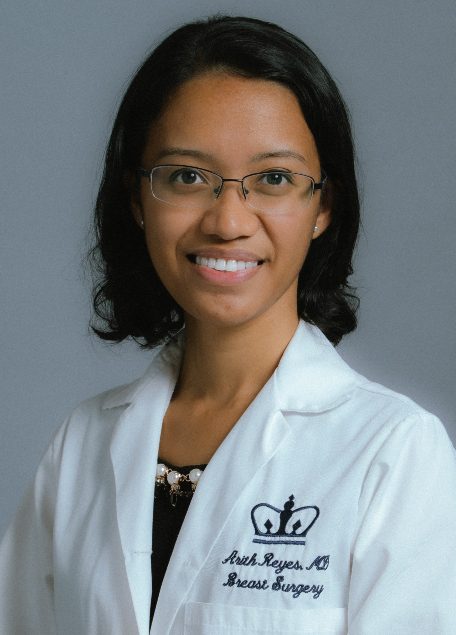6 Common Breast Cancer Myths Debunked
A breast surgeon explains the truth behind these misconceptions, and what you should be focused on instead.

Every year, about one in three new cancer cases in women is diagnosed as breast cancer, making it the second most common cancer among women, according to the American Cancer Society. And over a woman’s lifetime, there is a one in eight chance that she’ll develop the disease.
“Because breast cancer is so common, there are so many myths surrounding it,” says Dr. Arith Reyes, a surgeon specializing in breast cancer and benign breast diseases at NewYork-Presbyterian/Columbia University Irving Medical Center and NewYork-Presbyterian Westchester. “It’s important to stay informed about what is true about breast cancer and what is not, so that you understand what the real risk factors are.”
Health Matters spoke with Dr. Reyes to dispel common misconceptions about breast cancer and what people should know about the disease.

Dr. Arith Reyes
Myth No. 1: Having large breasts increases your risk of breast cancer.
Dr. Reyes: Breast size does not increase your risk, but having dense breasts does. Having dense breasts means that you have higher amounts of fibrous and glandular tissue in your breast and lower amounts of fatty tissue. The only way to have your breast density measured is by doing a mammogram.
It’s important to note that having dense breasts is common. About 50% of women in the U.S. who are 40 years and older do, according to the Centers for Disease Control and Prevention (CDC), so having dense breasts does not mean that you will have breast cancer. It does increase the risk of developing the disease, although it’s not clear why, and makes breast cancer hard to find on a mammogram. That’s why additional screening, such as an ultrasound or MRI, is recommended for women with dense breasts. In the U.S., mammogram centers are now required to notify women of their breast density.
Myth No. 2: Breast cancer only occurs in older women.
People who are middle-aged and older are more likely to be diagnosed with breast cancer — the median age at diagnosis is 62 — but we are seeing younger women getting diagnosed with the disease. Recently, a study published in BMJ Oncology on the rise in early-onset cancers found that breast cancer was the most commonly diagnosed cancer in Americans under 50 in 2019.
We don’t know why cancer is rising among younger people, but it is one of the reasons we recommend getting your risk for breast cancer evaluated by 25. This can help us determine if screening should start before 40, the age at which we recommend women with average risk begin their annual breast cancer screenings.
Breast cancer risk is assessed using questionnaires, such as the National Cancer Institute’s Breast Cancer Risk Assessment Tool (also known as the Gail model) and the Tyrer-Cuzick Risk Assessment Calculator. These models calculate your risk based on factors such as your age, family history, whether you have genes known to increase the risk for breast cancer, and race and ethnicity. Questions may also ask about your breast density, your age at first period, and the age at which you gave birth to your first child.
Myth No. 3: Men don’t get breast cancer.
While breast cancer occurs more often in women, it can also happen in men, although it is rare. In the U.S., about 1 in every 100 breast cancer cases are diagnosed in a man, according to the CDC.
Myth No. 4: You won’t develop breast cancer if you have no family history of it.
Most people who develop breast cancer have no history of it in their families. But having a family history, such as breast cancer in a first- or second-degree relative, is a risk factor. For example, if you have a mother, sister, or daughter with breast cancer, it almost doubles your risk, according to the American Cancer Society. Women with a dad or brother who had breast cancer are also at an increased risk. For people who have a family history, it’s worth speaking with a cancer specialist to get their risk calculated.
Myth No. 5: In vitro fertilization (IVF) increases your risk of breast cancer.
Studies suggest that IVF is not associated with an increased risk for breast cancer. A study published in JAMA found that breast cancer risk in women undergoing IVF treatment was not significantly different from the risk found in the general population, or in women who used other fertility treatments. The 21.1-year study followed more than 25,000 women who underwent fertility treatments.
Myth No. 6: Lumps or pain in the breast is always a sign of breast cancer.
Lumps and pain in the breasts are common and can happen for noncancerous reasons. Some benign conditions include:
- Sacs filled with fluids (cysts)
- Painless, movable, and firm round lumps (fibroadenomas)
- Damaged fatty tissue (fat necrosis)
- Growths inside milk ducts (intraductal papillomas)
- Enlarged lymph nodes
- Breast pain (mastalgia)
- Breast infections (mastitis) or abscesses
- Inflamed blood vessels (thrombophlebitis)
- Generalized breast lumpiness
If you feel a lump in your breast, I recommend seeing a physician so that you can undergo imaging to determine the cause of the lump. Another thing to know is that not all lumps need to be operated on. If a fibroadenoma is less than two centimeters and is not causing any pain, for example, it can usually stay in place. But we would operate once it grows or begins to bother the patient.
One of the things that I tell patients is that breast cancer is almost always painless, which is why it can be missed. It’s also a reason why it’s so important to get screened regularly, starting at age 40 if you are at average risk, or sooner if you’re at high risk, depending on recommendations from your doctor.
Arith Reyes, M.D., is a board-certified surgeon specializing in breast cancer and benign breast diseases at NewYork-Presbyterian/Columbia University Irving Medical Center and NewYork-Presbyterian Westchester. She is also an assistant professor of surgery at Columbia University Vagelos College of Physicians and Surgeons. Dr. Reyes performs all aspects of breast surgery, including breast conservation (lumpectomy), mastectomy, nipple-sparing mastectomy, and axillary lymph node procedures.
